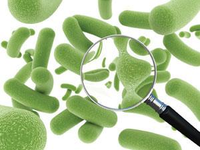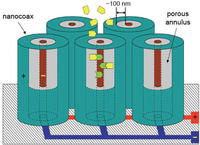-
Scanning social media as a tool for biosurveillance
DHS is considering observing and scanning social media Web sites to collect and analyze health-related data which could help identify outbreaks of infectious diseases and other public health and national security risks
-
-
Technology used in BioWatch could not detect pathogens, issued false alarms
The BioWatch program was created to detect the release of pathogens in the air as part of a terrorist attack, but scientists say that the program is unable to detect lethal germs because the system uses defective components; these components often set off false alarms; for example, BioWatch sensors issued fifty alarms between 2003 and 2008, but scientists and security authorities never had enough confidence in the BioWatch system to evacuate an area or take other emergency steps
-
-
U.S. urgently needs better bioterrorism, disease tracking system
Nearly eleven years have passed since the fall 2001 bioterrorism-related anthrax attacks that shook the United States, killing five people and injuring seventeen, a leading bioterrorism expert says the country has still not learned its lesson; he says that current data mining approaches are passive and do not provide immediate solutions to the emergencies at hand, proposing instead an electronic, clinician-based reporting system which would have the capacity to limit the impact of a bioterrorism attack
-
-
Many Americans exposed to drinking water-related gastrointestinal illness
More than 100 million people in the United States rely on water piped into homes, schools, and businesses from public water systems that get their water from wells, rather than lakes, rivers, and other above-ground sources; much of that water either is not disinfected at all or is not adequately disinfected to kill disease-causing viruses
-
-
Questions raised about cost, reliability of BioWatch upgrade

One year ago, DHS said a new contract for Biowatch, a system for detecting biological attacks on the United States, would be awarded in May 2012 and would cost an estimated $3.1 billion during its initial five years of operation; now DHS has decided to postpone the plans due to concerns about cost and reliability
-
-
Near-instantaneous DNA analysis
Polymerase chain reaction (PCR) is an indispensible technique allowing researchers and clinicians to produce millions of copies from a single piece of DNA or RNA for use in genome sequencing, gene analysis, inheritable disease diagnosis, paternity testing, forensic identification, and the detection of infectious diseases; PCR for point-of-care, emergency-response, or widespread monitoring applications needs to be very fast — on the order of a few minutes; this has now been achieved
-
-
Antibiotic residues in sausage meat may promote pathogen survival

Antibiotic residues in uncured pepperoni or salami meat are potent enough to weaken helpful bacteria that processors add to acidify the sausage to make it safe for consumption; sausage manufacturers commonly inoculate sausage meat with lactic-acid-producing bacteria; by killing the bacteria that produce lactic acid, antibiotic residues can allow pathogenic bacteria to proliferate
-
-
DHS using Boston subway system to test new sensors for biological agents

Bioterrorism is nothing new, and although medicines have made the world a safer place against a myriad of old scourges both natural and manmade, it still remains all too easy today to uncork a dangerous cloud of germs; DHS’s Science and Technology Directorate (DHS S&T) has scheduled a series of tests in the Boston subways to measure the real-world performance of new sensors recently developed to detect biological agents
-
-
Electronic nose detects airborne toxins down to the parts per billion level
Research create an electronic nose device with applications in agriculture, industry, homeland security, and the military; the device can detect small quantities of harmful airborne substances
-
-
New technology combats global pandemic of drug counterfeiting
Drug counterfeiting is so common in some developing countries – in some studies, 50 percent of the drug samples from Southeast Asia have been counterfeit — that patients with serious diseases are at risk of getting a poor-quality drug instead of one with ingredients that really treat their illness
-
-
New detection device for forensic and security applications
A new biological sampling and detection device could soon be used by first responders in the forensic and security sectors; the patented technology allows for rapid sampling of up to eight targets simultaneously, testing powder, liquids, or surfaces directly and has applications across the forensic and security areas
-
-
Deadly E. coli strain decoded
The secret to the deadly 2011 E. coli outbreak in Germany has been decoded; the deadliest E. coli outbreak ever, which caused fifty-four deaths and sickened more than 3,800 people, was traced to a particularly virulent strain that researchers had never seen in an outbreak before
-
-
New rapid diagnostic test for pathogens, contaminants developed
Using nanoscale materials, researchers have developed a single-step method rapidly and accurately to detect viruses, bacteria, and chemical contaminants; the method could be used to detect pathogens and contaminants in biological mixtures such as food, blood, saliva, and urine
-
-
Northrop Grumman's biodetection solution completes field test
Northrop Grumman says its Next Generation Automated Detection System (NG-ADS) for homeland defense applications has successfully completed a field test and is ready for the program’s next phase
-
-
Saab shows new CBRN detection system
Saab introduces a new concept in CBRN detection: a CBRN detection and warning system designed for use by non-specialists in the field
-
- All
- Regional
- Water
- Biometrics
- Borders/Immig
- Business
- Cybersecurity
- Detection
- Disasters
- Government
- Infrastructure
- International
- Public health
- Public Safety
- Communication interoperabillity
- Emergency services
- Emergency medical services
- Fire
- First response
- IEDs
- Law Enforcement
- Law Enforcement Technology
- Military technology
- Nonlethal weapons
- Nuclear weapons
- Personal protection equipment
- Police
- Notification /alert systems
- Situational awareness
- Weapons systems
- Sci-Tech
- Sector Reports
- Surveillance
- Transportation
Advertising & Marketing: advertise@newswirepubs.com
Editorial: editor@newswirepubs.com
General: info@newswirepubs.com
2010-2011 © News Wire Publications, LLC News Wire Publications, LLC
220 Old Country Road | Suite 200 | Mineola | New York | 11501
Permissions and Policies
Editorial: editor@newswirepubs.com
General: info@newswirepubs.com
2010-2011 © News Wire Publications, LLC News Wire Publications, LLC
220 Old Country Road | Suite 200 | Mineola | New York | 11501
Permissions and Policies
